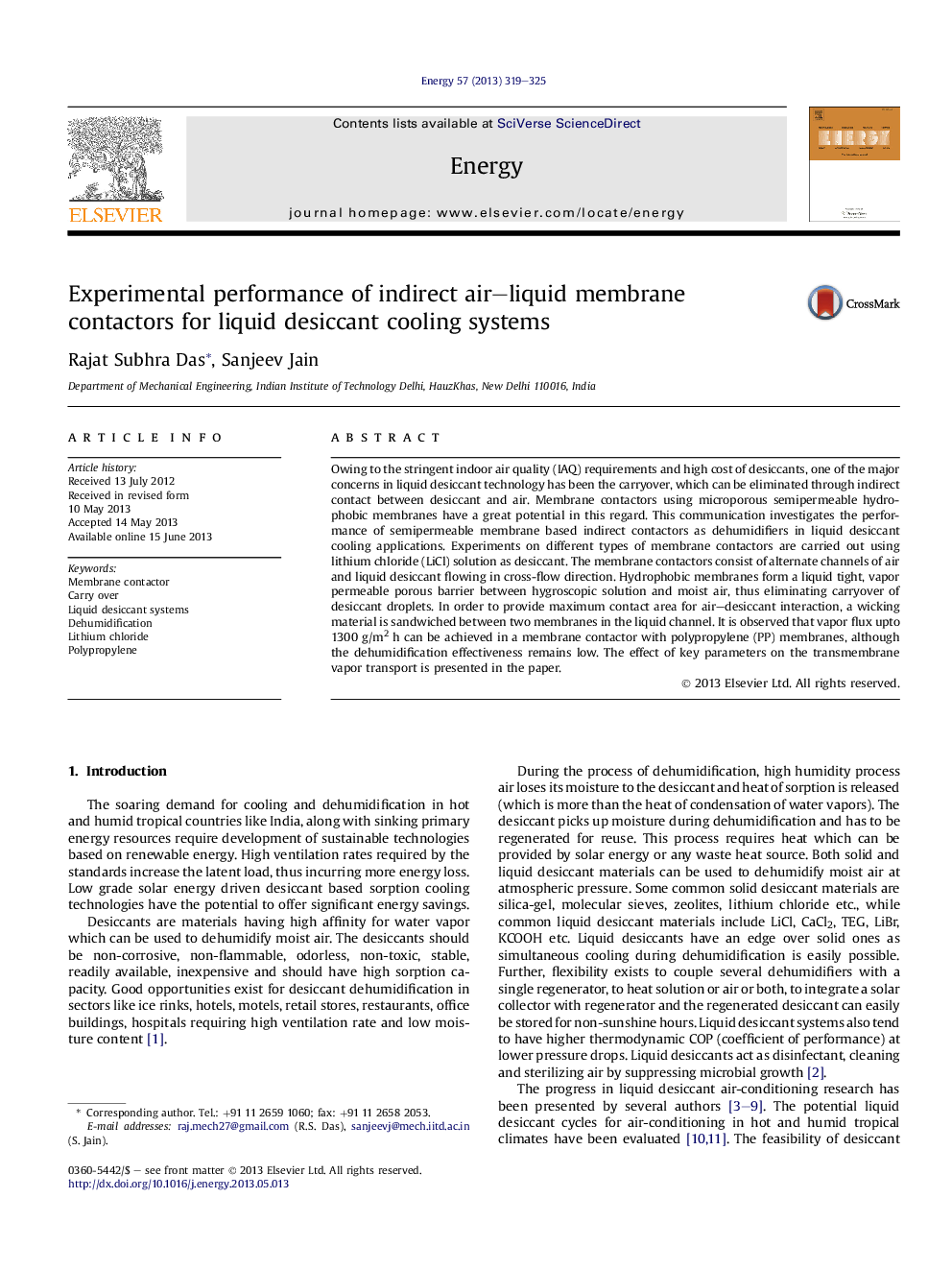| Article ID | Journal | Published Year | Pages | File Type |
|---|---|---|---|---|
| 1733073 | Energy | 2013 | 7 Pages |
•Indirect membrane contactors developed to avoid carryover in liquid desiccant system.•Dehumidification effectiveness and vapor flux reported under varying conditions.•Vapor flux upto 1295 g/m2 h in polypropylene contactor with high area density.•Dehumidification effectiveness with LiCl solution varies within 23% to 45%.
Owing to the stringent indoor air quality (IAQ) requirements and high cost of desiccants, one of the major concerns in liquid desiccant technology has been the carryover, which can be eliminated through indirect contact between desiccant and air. Membrane contactors using microporous semipermeable hydrophobic membranes have a great potential in this regard. This communication investigates the performance of semipermeable membrane based indirect contactors as dehumidifiers in liquid desiccant cooling applications. Experiments on different types of membrane contactors are carried out using lithium chloride (LiCl) solution as desiccant. The membrane contactors consist of alternate channels of air and liquid desiccant flowing in cross-flow direction. Hydrophobic membranes form a liquid tight, vapor permeable porous barrier between hygroscopic solution and moist air, thus eliminating carryover of desiccant droplets. In order to provide maximum contact area for air–desiccant interaction, a wicking material is sandwiched between two membranes in the liquid channel. It is observed that vapor flux upto 1300 g/m2 h can be achieved in a membrane contactor with polypropylene (PP) membranes, although the dehumidification effectiveness remains low. The effect of key parameters on the transmembrane vapor transport is presented in the paper.
